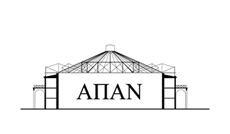Marinis, Architecture in the churches of Constantinople (2014)
[Bibliography]
Vasileios Marinis, Architecture and ritual in the churches of Constantinople: ninth to fifteenth centuries (Cambridge University Press, New York 2014)
This book examines the interchange of architecture and ritual in the Middle and Late Byzantine churches of Constantinople (ninth to fifteenth centuries). It employs archaeological and archival data, hagiographic and historical sources, liturgical texts and commentaries, and monastic typika and testaments to integrate the architecture of the medieval churches of Constantinople with liturgical and extra-liturgical practices and their continuously evolving social and cultural context. The book argues against the approach that has dominated Byzantine studies: that of functional determinism, the view that architectural form always follows liturgical function. Instead, proceeding chapter by chapter through the spaces of the Byzantine church, it investigates how architecture responded to the exigencies of the rituals, and how church spaces eventually acquired new uses. The church building is described in the context of the culture and people whose needs it was continually adapted to serve. Rather than viewing churches as frozen in time (usually the time when the last brick was laid), this study argues that they were social constructs and so were never finished, but continually evolving.
Contents: List of Illustrations. Acknowledgments. Introduction. Chapter One: Liturgical Ritual: The Shape and Development of the Byzantine Rite. Chapter Two: The Sanctuary and the Templon. Chapter Three: The Naos. Chapter Four: The Narthex and the Exonarthex. Chapter Five: Subsidiary Spaces: Chapels, Outer Ambulatories, Outer Aisles, Crypts, Atria, and Related Spaces. Chapter Six: Nonliturgical Use of Churches. Conclusion.
Appendix. Catalogue of Churches. Glossary of Terms. Bibliography. Index. Total pages 262. Hardcover.
